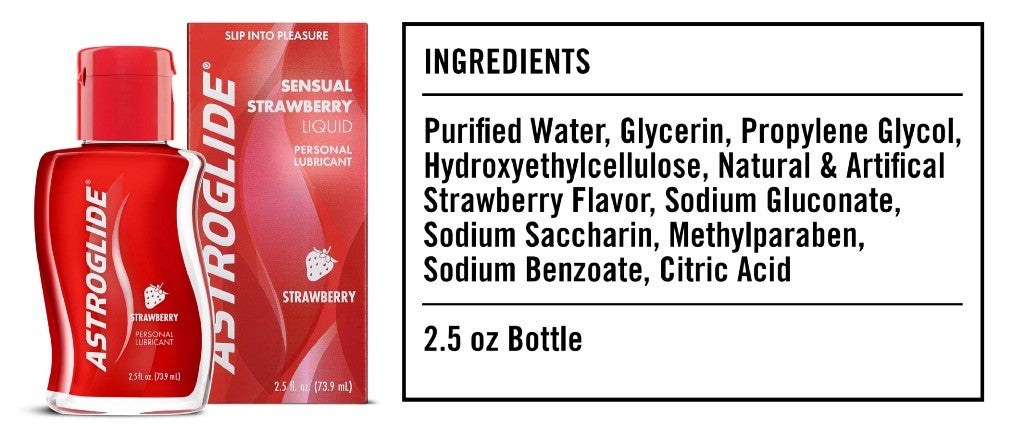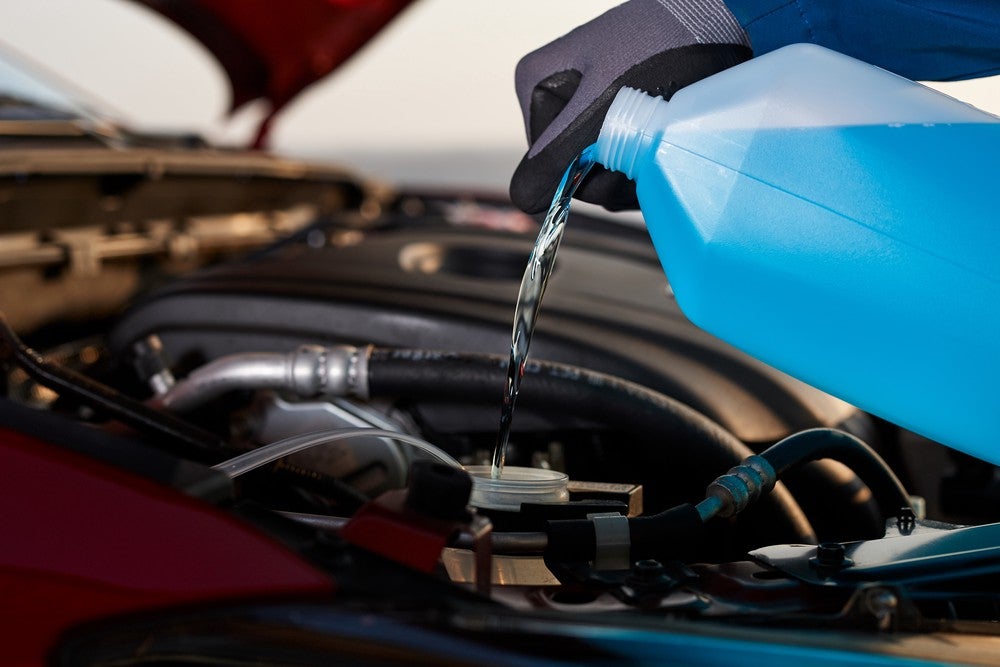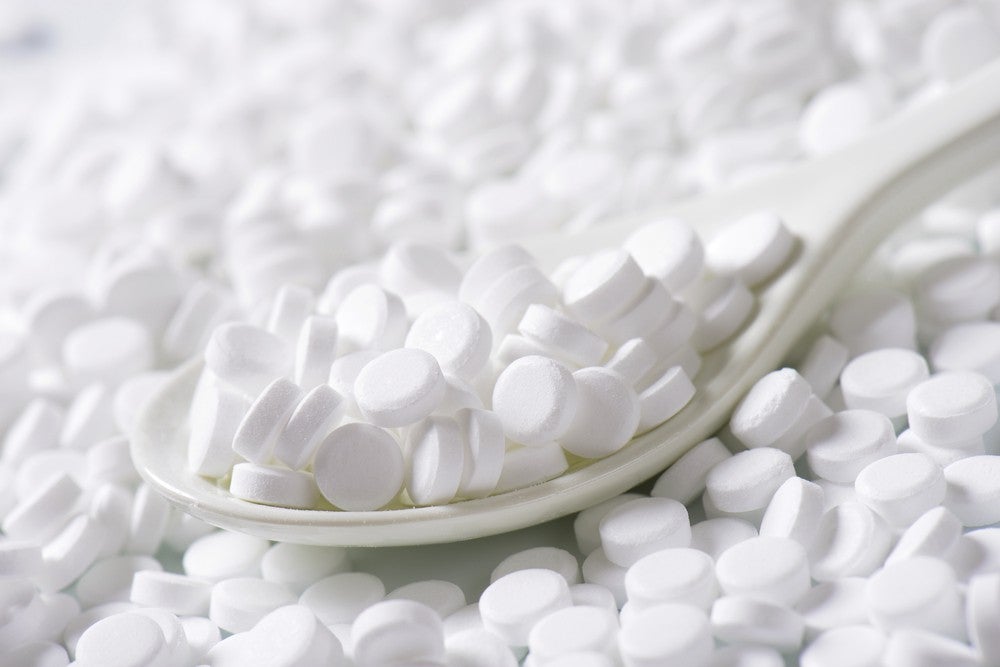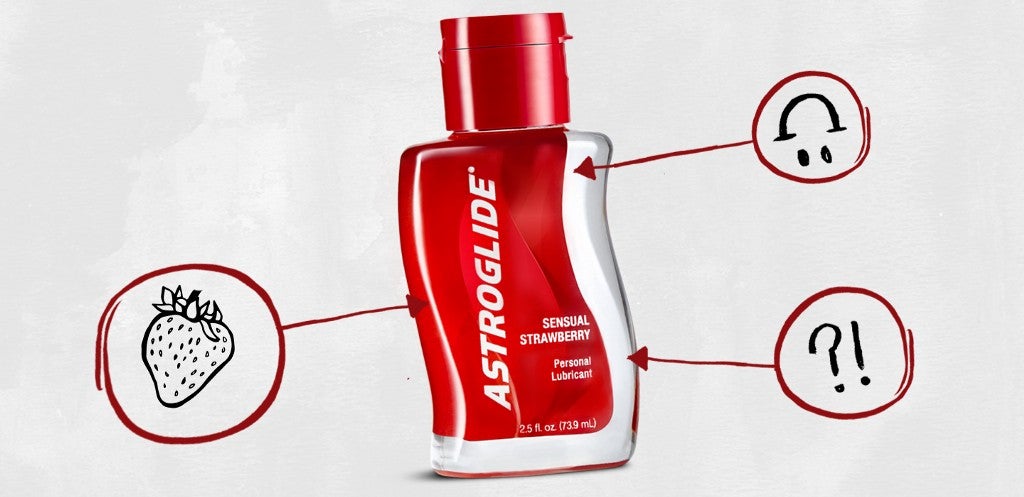We’re often told that you should never eat anything if you don’t recognize the names of the ingredients. But since most of us have no idea what xanthan gum or potassium benzoate are — or more importantly, what they’re doing to our bodies — we’re decoding the ingredients in the many things Americans put in (and on) themselves with the help of an expert. This edition: Astroglide Strawberry-Flavored Personal Lubricant, which is made from 10 separate ingredients that we’ve broken down in the exact order they appear on the bottle.


1) Purified Water: Generally used as a solvent, purified water is just water that’s been distilled or deionized (aka demineralized) to remove impurities like bacteria and microorganisms.
2) Glycerin: Glycerin is often used as a thickening agent. It’s also what’s called a humectant, according to Sharad P. Paul, skin-care expert, skin-cancer surgeon and author of The Genetics of Health. “Humectants are ingredients that are hygroscopic — that is, they absorb water and bind to skin,” he says. That’s why they’re usually used in skin-care products: They keep moisture in the skin by reducing water loss.
3) Propylene Glycol: Propylene glycol, which acts as a humectant and a preservative, has a bad reputation among consumers since it’s a main ingredient in antifreeze. But it’s used there in a much larger dosage than would ever be found in something meant to be consumed by the public. Both the FDA and Paul say that the small amounts found in many foods (Betty Crocker Chocolate Fudge Cake Mix), beverages (Fireball Cinnamon Whiskey), pharmaceutical (Colgate Total Toothpaste) and cosmetic products (Cetaphil Gentle Skin Cleanser) don’t warrant concern.

That said, Paul does recommend testing small amounts of newly purchased cosmetics containing propylene glycol on a small area of the skin away from the face (and other sensitive areas) before using it, as some people are sensitive to the ingredient.
4) Hydroxyethylcellulose: Derived from a plant-based compound called cellulose, hydroxyethylcellulose “typically functions as a gelling or thickening agent,” according to Dagan Xavier, ingredient expert and co-founder of Label Insight. Long story short: This is the ingredient that provides lube with its “lube-y” texture.
5) Natural and Artificial Strawberry Flavor: While natural flavors are literally flavors derived from an actual food source — i.e., strawberry flavoring taken from a real strawberry — artificial flavors are chemical compounds created in a lab that mimic a natural flavor in some way. While that may sound unhealthy, physician and biochemist Cate Shanahan, author of Deep Nutrition: Why Your Genes Need Traditional Food, told us during our exploration of all 26 ingredients in nacho-flavored Doritos that these flavorings are added in very small quantities, and therefore shouldn’t cause you any harm.
6) Sodium Gluconate: This ingredient functions as both a preservative and a chelating agent (a substance that prevents deterioration during processing and storage by binding the minerals within the product). In simpler terms, sodium gluconate helps keep the lube fresh while it sits on the shelf (or your bedside table).
7) Sodium Saccharin: Sodium saccharin is the solid form of an artificial sweetener called saccharin. During the 1970s, controversial studies performed on rodents found the ingredient to be carcinogenic, though subsequent studies on both people and primates found that saccharin was indeed safe for human consumption. One of those studies, published in the Journal for the National Cancer Institute in 1998, found that primates exposed to saccharin on a daily basis from birth showed no adverse effects.

8) Methylparaben: This ingredient is widely used for its antifungal and preservative properties. Paul points out that the scientific community has gone back and forth on whether or not parabens like methylparaben are carcinogenic: In 2004, molecular biologist Philippa Darbre found small concentrations of parabens in breast cancer cells, which raised concerns about their use in skin-care products. Subsequent studies exploring this connection, however, deemed parabens to be non-carcinogenic. Subsequent studies to those studies found parabens to be (you guessed it) carcinogenic.
Either way, Paul suggests avoiding them as best you can: “The fact is, there are several alternative preservatives, and parabens are only used because they’re cheap and effective. So I tell my clients to avoid any product containing parabens.”
9) Sodium Benzoate: Studies show that sodium benzoate, another preservative, may exacerbate hyperactive behavior in young children. For our purposes, however, maybe that’s a good thing — surely hyperactivity and lube go hand-in-slippery-hand?
10) Citric Acid: The most common food additive used today, according to Xavier, citric acid is a sour flavoring agent derived from citrus. It’s often used for its natural preservative qualities.

The Takeaway
“We can ‘eat’ via our skin,” says Paul, which is why we shouldn’t just be checking the ingredients lists on our food — we should be checking the ingredients lists on our lube (and anything else we put on our skin), too.
As for the consensus on Astroglide Strawberry-Flavored Personal Lubricant? Bathing in the stuff on a daily basis could potentially be dangerous due to the presence of methylparaben; that said, none of the ingredients found in Astroglide Strawberry-Flavored Personal Lubricant have been damned by conclusive scientific evidence, so the positives of whipping it out every now and then for a steamy, strawberry-flavored evening probably outweigh the negatives.

